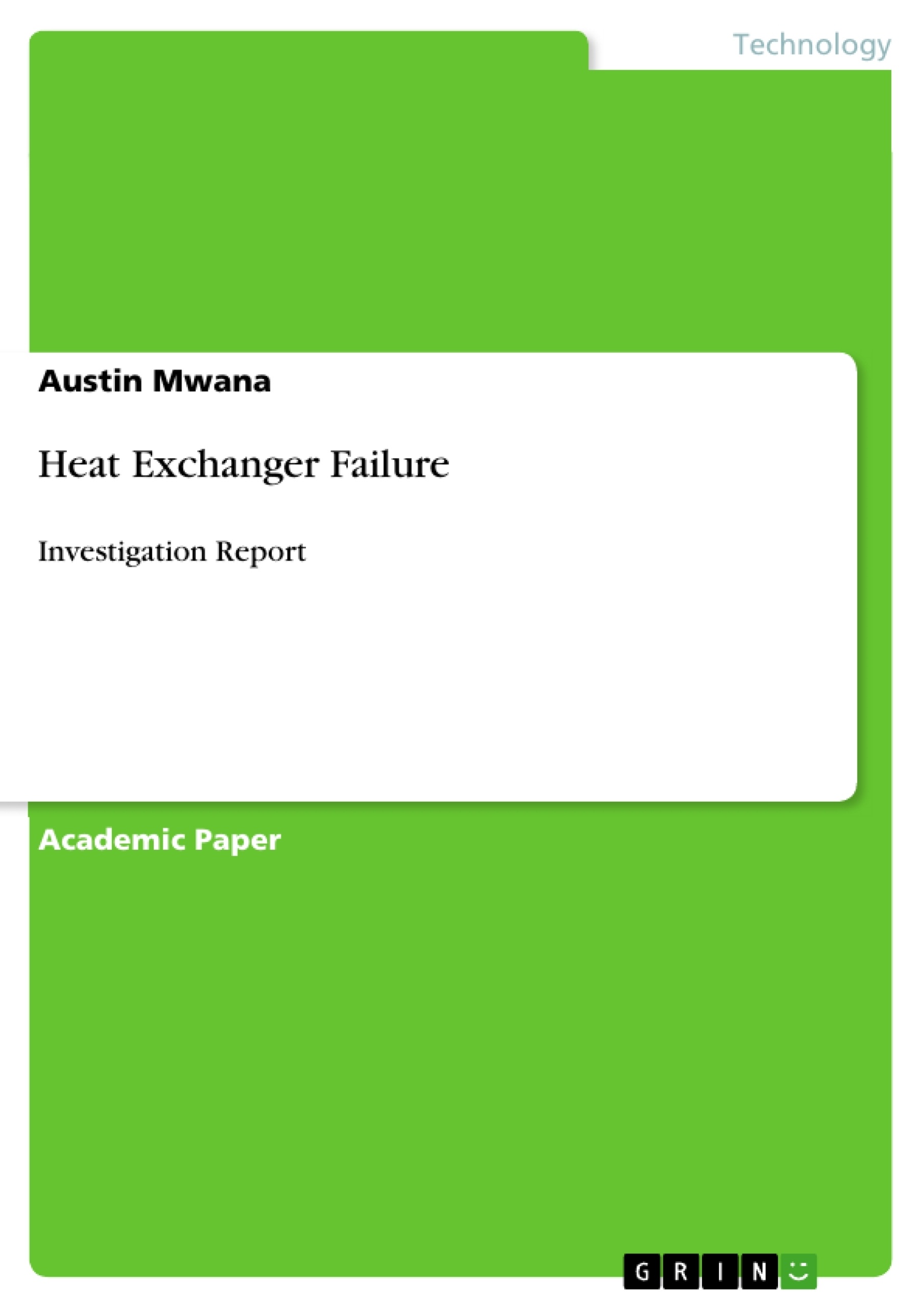As a Corrosion Expert, this report centred around the failure investigation of a shell and tube heat exchanger due to corrosion mechanisms.
The different types of corrosion, its effect resulting to the failure and possible solutions and recommendations were submitted to the client for further action. The report also sheds light on the alloys used for the design and better alternatives to be used to prevent future degradation of the shell and tube heat exchangers.
Inhaltsverzeichnis (Table of Contents)
- Introduction
- Methodology
- Failure Investigation
- Material Description
- Inspection and Tests
- Effect of the Operational conditions
- Operational Conditions of the heat exchanger
- Effects of Corrosion
- Detected Corrosion
- Crevice Corrosion
- Stress Cracking Corrosion
- Pitting Corrosion
- Conclusion
- Recommendation
- Appendix
- References
Zielsetzung und Themenschwerpunkte (Objectives and Key Themes)
This report aims to analyze the failure of a C22 tube bundle in a high-pressure (HP) gas cooler heat exchanger, situated offshore, and determine the root cause of the failure to propose effective solutions for rectification and prevention. The investigation utilizes failure analysis techniques, drawing from previous testing results, operational conditions, and material analysis.
- Failure analysis methodology and the "HUFIEMOODS" approach.
- Impact of operational conditions, including seawater usage and high-velocity flow.
- Assessment of various corrosion types and their potential role in the failure.
- Detailed examination of the heat exchanger's material and design.
- Identification of effective solutions to prevent future failures.
Zusammenfassung der Kapitel (Chapter Summaries)
- Introduction: This chapter provides an overview of failure analysis, highlighting the importance of determining the root cause of failures. It also introduces the specific case study of the C22 tube bundle in a HP gas cooler heat exchanger and outlines the scope of the investigation.
- Methodology: This chapter outlines the approach taken for the failure investigation. It emphasizes a systematic process that includes analyzing previous test data, evaluating operational conditions, conducting material and design analysis, and performing visual inspection.
- Failure Investigation: This chapter delves into the specifics of the failure, focusing on the material description, inspection and testing procedures, and the impact of operational conditions on the heat exchanger. It also examines various types of corrosion that may have contributed to the failure.
Schlüsselwörter (Keywords)
This report focuses on failure analysis, heat exchanger failure, corrosion, operational conditions, material analysis, design analysis, and root cause determination. The investigation utilizes the "HUFIEMOODS" approach and incorporates insights from previous testing, operational data, and material properties to identify and propose solutions for preventing future failures.
- Quote paper
- Austin Mwana (Author), 2018, Heat Exchanger Failure, Munich, GRIN Verlag, https://www.grin.com/document/424143



